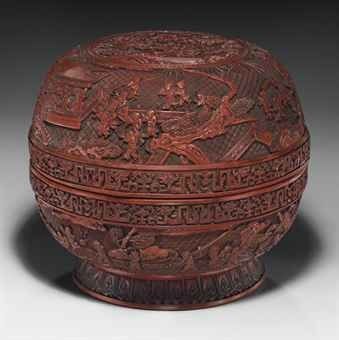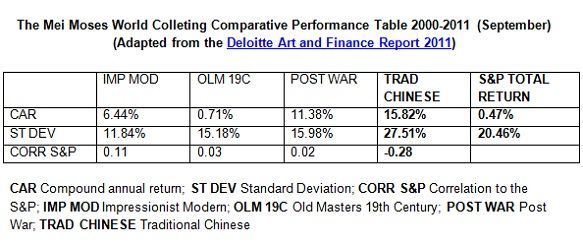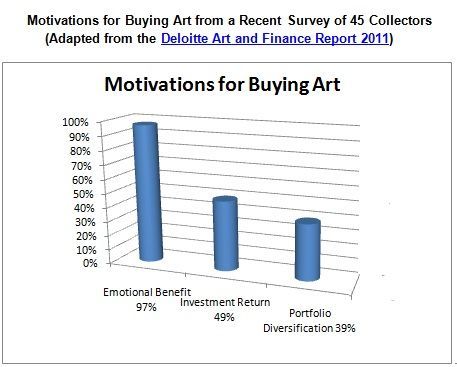Article
The Chinese are Buying!
Author(s):
Art as portfolio diversification for the individual investor. By adding traditional Chinese art as an alternative investment to stocks and bonds, a portfolio could be diversified away from the inherent risks of that market.
Editor: Shirley learned the hard way that sellers should beware too! Read about the troubles she and others have run into.
Anyone with Chinese art around the house, whether purchased before 2000 or inherited from the family, might want to take a closer look to determine its current vale. The Chinese art market is hot right now as nationals are buying back their heritage that was exported abroad.
In 1984 I purchased a lacquer box at a “going out of business sale” at a reputable NYC Madison Avenue shop. At the time I bought it both because it seemed like a good deal and I liked it.
“Send it in,” the Asian art specialist at Christie’s said to me. “The Chinese are buying.”
He was referring to the recent upswing in sales to Chinese collectors at Christie’s and other auction houses. I had a Chinese cinnabar lacquer box that consequently might sell well.

The large carved red lacquer globular box and cover that I sent to Auction. Ming Dynasty, late 16th/17th century. Courtesy Christies
.
Indeed, the Chinese are buying. According to the Mei Moses Index, a respected art buying guide, the purchase of traditional Chinese art burst forth like an Asian firecracker during 2000 to 2011. It achieved a compound annual return of 15.82% compared to 0.47% for Standard and Poor’s 500 Index (the leading indicator of the U.S. equity market).

The Mei Moses World Collecting Comparative Performance Table 2000-2011 (September) above shows the returns of the S&P and the Traditional Chinese market on the right in bold. The traditional Chinese market is composed of art that the Chinese produced for themselves rather than export to the West. Still, some of it was exported abroad. All categories lagged behind the Traditional Chinese, in part because the recession in Europe and the U.S. diminished buyers in the impressionist, old masters and post war categories in which these countries commonly purchased.
What is equally important about this table is that the traditional Chinese art market had a negative correlation with the S&P, meaning they moved inversely. This suggests that by adding traditional Chinese art as an alternative investment to stocks and bonds, a portfolio could be diversified away from the inherent risks of that market.
This negative correlation is like music to collectors, who, according to a recent survey, gather special objects that not only appeal to her or him for emotional value, but also for investment return and portfolio diversification. This is certainly true of the lacquer box for me.

Though I don’t know how much a bidder, presumably Chinese, will pay for the box, I do have some expectations. One is that it should increase in value at least as much as the S&P since 1984 when I purchased it. At the time the S&P was 200 and now it is 1,200 — a six times upward push in value. If the lacquer box meets its reserve, it will gain 8.3 times what it cost, which is more than the S&P. This would sound great if I told it to others at cocktail parties.
But this simplified information is not the real skinny. The auction house has a stake in the box too. Though I tried to cut a contract more favorable, I ended up — like most other clients I suspect — paying a lot off the sale price to the house. These fees include photography, insurance (if I don’t cover it myself) and a percentage of the hammer price (averaging around 15% for this item).
Suddenly my 8.3 times profit, better than the S&P’s six times for the same time period, is reduced to 7.3 or 6.3. And this doesn’t include the insurance paid to cover the object for 25 years or the shipping to NYC. This doesn’t sound as good at cocktail parties.
So, it seems that buying art to diversify a portfolio is not a bad idea, especially for those that love and cherish what they buy with less thought to investment potential. But, if an average investor were to purchase art just to make money, that’s another issue.
Read more:
Some Intriguing Fringe Benefits
Could the U.S. Become a Third-World Country?




